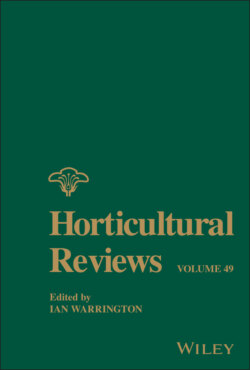Читать книгу Horticultural Reviews, Volume 49 - Группа авторов - Страница 25
F. Breeding for Floral Characteristics
ОглавлениеVariation exists in H. quercifolia for floral characteristics such as flower color, flowering time, flower size, and double flowers (Dirr 2004). Because the white sepals become pink or brown as the inflorescence ages, the flower color variation consists of whether they turn pink, the timing of pinking, and the shade of pink. To date, there are no known genotypes which have flowers that open pink. Inheritance of flower color in Hydrangea is not well studied, but it appears to be a quantitative trait considering the variability based on environment (with light intensity likely being a factor) and the seemingly infinite number of intermediate phenotypes. Variation in flowering time is available in cultivars such as ‘Late Hand’, which blooms about one month later than typical (Dirr 2004), and ‘Queen of Hearts’, which blooms about 7–10 days later than other cultivars (Reed and Alexander 2015). In the wild, individual plants have been observed flowering later in the season than the surrounding plants, while others flower multiple times in one season (A. Sherwood, pers. observ.). However, research will be required to identify environmental effects from those that are genetically controlled. Considerable variation also exists for flower size, with panicles ranging from 7 cm long in some wild plants (A. Sherwood, unpubl.) up to approximately 30 cm long in many cultivars. In H. macrophylla, double flowers are a recessively inherited trait that may be controlled by a single major gene (Suyama et al. 2015; Waki et al. 2018). However, double flowered H. quercifolia genotypes produce little to no seed or pollen, and the fertility of any pollen or seed that is produced by double flowers has not been studied. Additionally, the double flowered H. quercifolia cultivars tend to produce a considerably higher number of sepals (up to 20 per floret) compared to most of the double flowered H. macrophylla cultivars which produce around eight sepals per floret (Dirr 2004).
